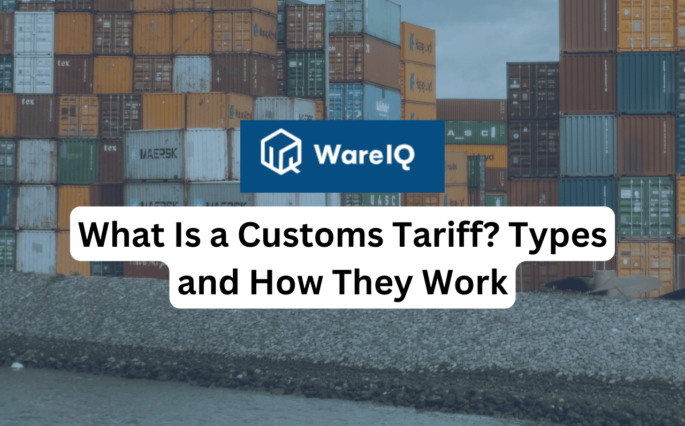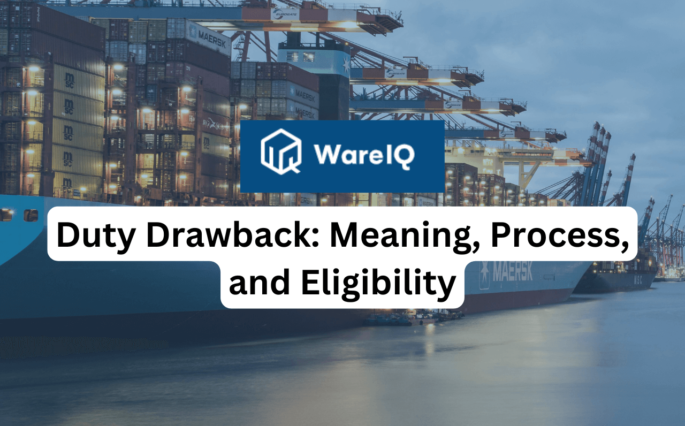Streamlining B2B Delivery: Optimizing Warehousing and Distribution Services

In today’s fast-paced and highly competitive business environment, streamlining B2B delivery is essential for optimizing warehousing and distribution services. Business-to-business (B2B) transactions involve the exchange of goods and services between companies rather than between companies and individual consumers. The efficiency of B2B delivery processes directly impacts the overall operational efficiency, customer satisfaction, and profitability of businesses. As companies increasingly rely on effective supply chain management to gain a competitive edge, optimizing warehousing and distribution services becomes crucial.
This article delves into the nuances of B2B delivery, exploring the fulfillment process, distribution services, and warehousing management, and offers strategies to enhance these critical areas.
What Is Business-to-Business (B2B)?
Business-to-business (B2B) refers to commercial transactions between businesses, such as between a manufacturer and a wholesaler or between a wholesaler and a retailer. Unlike business-to-consumer (B2C) transactions, which involve selling products directly to individual consumers, B2B transactions are characterised by larger order volumes, longer sales cycles, and more complex logistics requirements. B2B transactions often involve bulk purchasing, recurring orders, and long-term contracts, strongly emphasising building and maintaining business relationships.
The nature of B2B interactions demands a deep understanding of the partner businesses’ specific needs and operational processes, requiring tailored solutions in areas such as inventory management, warehousing, and distribution. Efficient B2B operations rely heavily on seamless coordination across the supply chain, sophisticated logistics management, and advanced technological integration to meet the high expectations of business clients and maintain competitive advantage.
What Is the B2B Fulfillment Process?
The B2B fulfillment process encompasses the end-to-end operations involved in receiving, processing, and delivering orders from one business to another. This process starts with order management, where orders are accepted through various channels such as electronic data interchange (EDI), online portals, or direct sales teams. Once an order is placed, it is processed in the warehouse, involving picking, packing, and preparing the goods for shipment.
Critical steps in the B2B fulfillment process include:
- Inventory Management: Ensuring the necessary stock levels are maintained to meet demand without overstocking.
- Order Processing: Efficiently manage order entries, verify order details, and prioritise orders based on client requirements.
- Warehouse Operations: Optimising the layout and operations of the warehouse for quick and accurate picking, packing, and shipping of orders.
- Quality Control: Conduct thorough inspections to ensure products meet quality standards before dispatch.
- Shipping and Logistics: Coordinating with carriers to ensure timely and cost-effective delivery of goods, often involving complex routing and scheduling to meet specific business customer needs.
- Tracking and Reporting: Providing real-time updates and detailed reporting to customers on order status, inventory levels, and delivery timelines.
B2B fulfillment often requires customised solutions to handle bulk orders, special packaging, and specific delivery instructions. The process is designed to ensure accuracy, efficiency, and reliability, which are crucial for maintaining strong business relationships and meeting the high expectations of B2B customers.
Breaking Down the B2B Distribution Service and Delivery Process
B2B distribution services and the delivery process are critical components of the supply chain that ensure products reach business customers efficiently and reliably. These services encompass the entire journey of goods from the manufacturer or supplier to the end business user, involving multiple stages and coordination with various stakeholders.
B2B Distribution Services:
- Supplier Coordination: The process begins with sourcing and procurement, where distribution centres coordinate with suppliers to receive goods. This step involves negotiating terms, managing lead times, and ensuring that the right quantities of products are available.
- Warehousing and Storage: Once goods are received, they are stored in strategically located warehouses. Effective warehousing involves organising inventory to optimise space and facilitate quick retrieval, which is crucial for meeting order deadlines.
- Inventory Management: Advanced inventory management systems track stock levels, manage reordering, and ensure that products are available when needed. This minimises the risk of stockouts and overstocking and balances supply with demand.
- Order Processing: Orders from business clients are processed through automated systems that ensure accuracy and efficiency. This involves verifying order details, checking inventory availability, and preparing the goods for dispatch.
B2B Delivery Process:
- Order Picking and Packing: Products are picked from the warehouse shelves once an order is processed. This step often utilises sophisticated technologies such as barcode scanning and automated retrieval systems to ensure accuracy. The goods are then packed according to the customer’s specifications, which may include special packaging requirements for safety or branding purposes.
- Shipping Coordination: Coordinating the shipment involves selecting the appropriate carriers based on factors like delivery speed, cost, and the nature of the goods. B2B shipments often require detailed routing and scheduling to align with the business customer’s receiving capabilities.
- Transportation: The transportation phase involves moving the goods from the warehouse to the customer’s location. This can involve multiple modes of transport, including trucks, trains, ships, or air freight, depending on the distance and urgency of the delivery.
- Delivery and Unloading: Upon arrival at the destination, the goods are unloaded and delivered to the specific location within the customer’s facility. This step often requires precise timing and coordination to ensure the receiving process is smooth and does not disrupt the customer’s operations.
- Post-Delivery Support: After delivery, support services such as installation, assembly, and maintenance might be provided, depending on the nature of the goods. Additionally, efficiently handling returns and exchanges is crucial for maintaining customer satisfaction.
Demystifying B2B Warehousing Process and Management
B2B warehousing process and management are integral to ensuring that goods are stored, handled, and dispatched efficiently to meet the specific demands of business customers. The focus is optimising space, streamlining operations, and employing technology to manage inventory and accurately and promptly fulfil orders.
B2B Warehousing Process:
1. Receiving Goods
The process begins with receiving goods from suppliers. This involves unloading shipments, checking the accuracy of the delivery against purchase orders, and inspecting the goods for damage or discrepancies. Efficient receiving procedures ensure that inventory is updated promptly and accurately.
2. Inventory Storage
Once received, goods are stored in designated areas within the warehouse. The storage system is organised to maximise space and facilitate easy retrieval. This can include pallet racking, shelving, and bulk storage. The layout is often designed based on the type and volume of goods, with fast-moving items placed in easily accessible locations.
3. Inventory Management
Effective inventory management involves tracking the quantity, location, and status of goods within the warehouse. Advanced warehouse management systems (WMS) automate inventory tracking, reduce errors, and provide real-time data on stock levels. This helps maintain optimal inventory levels and ensure the timely replenishment of stock.
4. Order Processing
The warehouse team picks the required items from the storage areas when an order is received. This step utilises picking lists generated by the WMS, which guides workers to the precise locations of the items. Efficient picking strategies, such as batch picking or zone picking, minimise travel time and increase productivity.
5. Packing and Labeling
After picking, the items are packed according to the customer’s requirements. This may involve special packaging to protect fragile items, bundling products, or adding branding elements. Proper labelling is crucial for ensuring that the right products are delivered to the correct destinations.
6. Shipping and Dispatch
Orders are prepared for shipment once packed. This involves selecting the appropriate shipping method and carrier based on delivery speed and cost. The WMS generates shipping labels and documentation, ensuring all necessary information accompanies the shipment.
B2B Warehousing Management:
1. Space Optimization
Effective warehousing management focuses on optimizing the use of available space. This includes designing the warehouse layout to minimize wasted space and implementing storage solutions that maximize vertical and horizontal space utilization.
2. Technology Integration
Modern warehouses integrate advanced technologies such as automation, robotics, and IoT devices to enhance efficiency. Automated guided vehicles (AGVs), robotic picking systems, and real-time tracking sensors help streamline operations and reduce human error.
3. Inventory Accuracy
Maintaining accurate inventory records is critical for meeting customer demands. Regular cycle counts, audits, and RFID or barcode systems help ensure precise inventory data, reducing the risk of stockouts or overstocking.
4. Labor Management
Efficient labor management involves scheduling shifts, training staff, and monitoring performance to ensure warehouse operations run smoothly. Implementing best practices in labor management helps optimize productivity and reduce operational costs.
5. Safety and Compliance
A safe working environment is a top priority in B2B warehousing. This involves adhering to safety regulations, properly training employees, and maintaining good-quality equipment. Compliance with industry standards and legal requirements is essential to avoid penalties and maintain operational integrity.
6. Continuous Improvement
B2B warehousing management focuses on continuous improvement by regularly analysing key performance indicators (KPIs) and implementing process improvements. Lean warehousing techniques, Six Sigma methodologies, and regular feedback loops help identify areas for enhancement and drive operational excellence.
You may also like to read : What is Physical Distribution in Supply Chain Management
Conclusion
Streamlining B2B delivery is essential for optimising warehousing and distribution services in today’s competitive business landscape. Effective B2B fulfillment processes, distribution services, and warehousing management are crucial for ensuring timely and accurate deliveries, reducing operational costs, and enhancing customer satisfaction. By leveraging advanced technologies and implementing best practices, businesses can achieve greater efficiency and reliability in their B2B operations.
In conclusion, businesses that prioritise optimising their B2B delivery processes will be better positioned to meet their clients’ demands, gain a competitive edge, and drive long-term success. As the B2B landscape evolves, staying ahead of industry trends and continuously improving logistics and warehousing strategies will be vital in maintaining a solid market presence.
FAQs About B2B Delivery
What is business-to-business (B2B)?
Business-to-business (B2B) refers to transactions between two businesses, such as manufacturers and wholesalers or wholesalers and retailers. These transactions typically involve larger quantities and higher values than business-to-consumer (B2C) transactions.
What is the B2B fulfillment process?
The B2B fulfillment process includes order placement, processing, picking, packing, and shipping. It involves verifying order details, checking inventory, selecting items, packing them securely, and dispatching them to the client’s location, often using advanced technologies for efficiency.
What are the critical components of B2B distribution services?
Critical components of B2B distribution services include procurement, warehousing, order processing, transportation, and last-mile delivery. These stages ensure that goods move efficiently from suppliers to business customers, leveraging robust logistics management and reliable transportation networks.
How does B2B warehousing differ from B2C warehousing?
B2B warehousing typically handles larger volumes and more complex orders than B2C warehousing. Meet the demands of business clients, it requires advanced inventory management, efficient storage solutions, and robust order fulfillment processes.
What are the challenges in B2B delivery?
Challenges in B2B delivery include managing large and complex orders, ensuring timely deliveries, maintaining accurate inventory levels, coordinating with multiple suppliers, and handling returns efficiently. Advanced logistics management and technology are crucial to overcoming these challenges.
How can technology improve B2B warehousing and distribution?
Technology can improve B2B warehousing and distribution by providing real-time inventory tracking, automating order processing, optimising warehouse layouts, enhancing picking accuracy, and offering advanced shipping and tracking solutions. Technologies such as warehouse management systems (WMS) and transportation management systems (TMS) are particularly beneficial.








